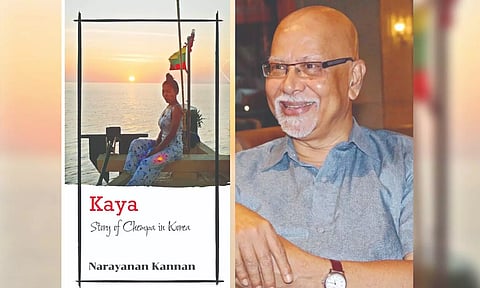

CHENNAI: Kannan Narayanan’s book, Kaya, explores the plausible historical links between Tamil Nadu, and South Korea through routes such as the “spice route” or the “silk route by sea.” The book delves into the intriguing narrative of a young woman from India named Heo Hwang Ok, who, according to the legend, sailed to Gimhae, South Korea, in CE 47 and established the Kaya confederation. This confederation was said to have been founded by her, claiming she hailed from a land called Ayuta, known for its twin fish national emblem. Narayanan’s work argues that the twin fish emblem was associated with the early Pandyas, dating back several hundred years before CE and that her homeland was likely Aai.
The possibility that she departed from Athiyuthu, a renowned port in ancient Tamilagam, is suggested due to the similarity between “Athiyuthu” and “Ayuta.” The book employs a compelling array of literary, linguistic, cultural, and archaeological evidence to historicise this legend, putting forth an alternative thesis for establishing ancient connections between South Korea and India.
Narayanan, the author, categorises the narrative style of the book as non-fiction, presenting it as a meticulously researched monograph replete with citations and translations of classical Tamil poems for reference. Regarding the motivations behind documenting this particular story, Narayanan reveals, “There are several striking features that remind one about these links. The most obvious is the similarity of expressions in the language in addressing parents, relatives, grammatical similarities and common words. Koreans are as spicy in their diet as the Tamils. The social ethos in Korea is very comfortable for Tamils. This book encourages scholars to do more research on several fields. Many students from India are interested in doing such research which is encouraging.”
Drawing from his historical expertise, Narayanan underscores significant interconnections between Korea and India. He notes that elements like the Tan-gun stories at the inception of Korean history and the strong presence of Buddhism hint at interconnections. He also highlights genetic research that affirms these ties. Enumerating parallels between the two nations, the author points out, “The well-known lullaby of Korean Arirang is very similar to Aarariraro of Tamils. There is a striking similarity between the Korean alphabet and the Tamil alphabet, in the grammar and linguistic structure. Childhood sports are common between these two nations. Indian kids are drawn towards Korean pop music, dramas, and films easily because of several cultural similarities.”
Narayanan emphasises that readers will gain a comprehensive understanding of the India-Korea relationship through the journeys undertaken by megalithic Tamils, acting as bridges between these two lands. “The union between Chempa, also known as Heo Hwang Ok, from Madurai and Kim Suro of Gimhae is possibly the earliest instance of international trade partnership and marriage,” the author concludes.